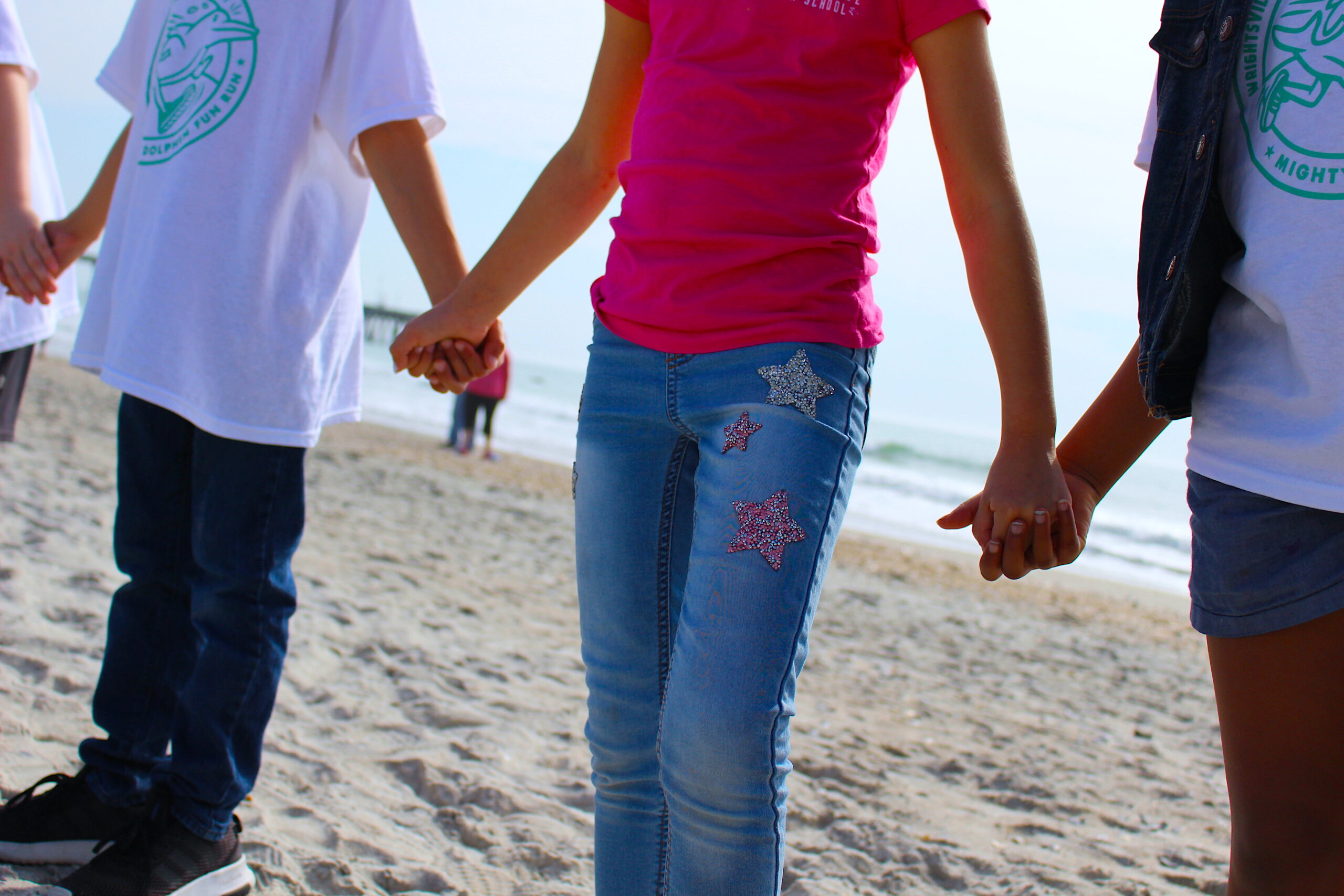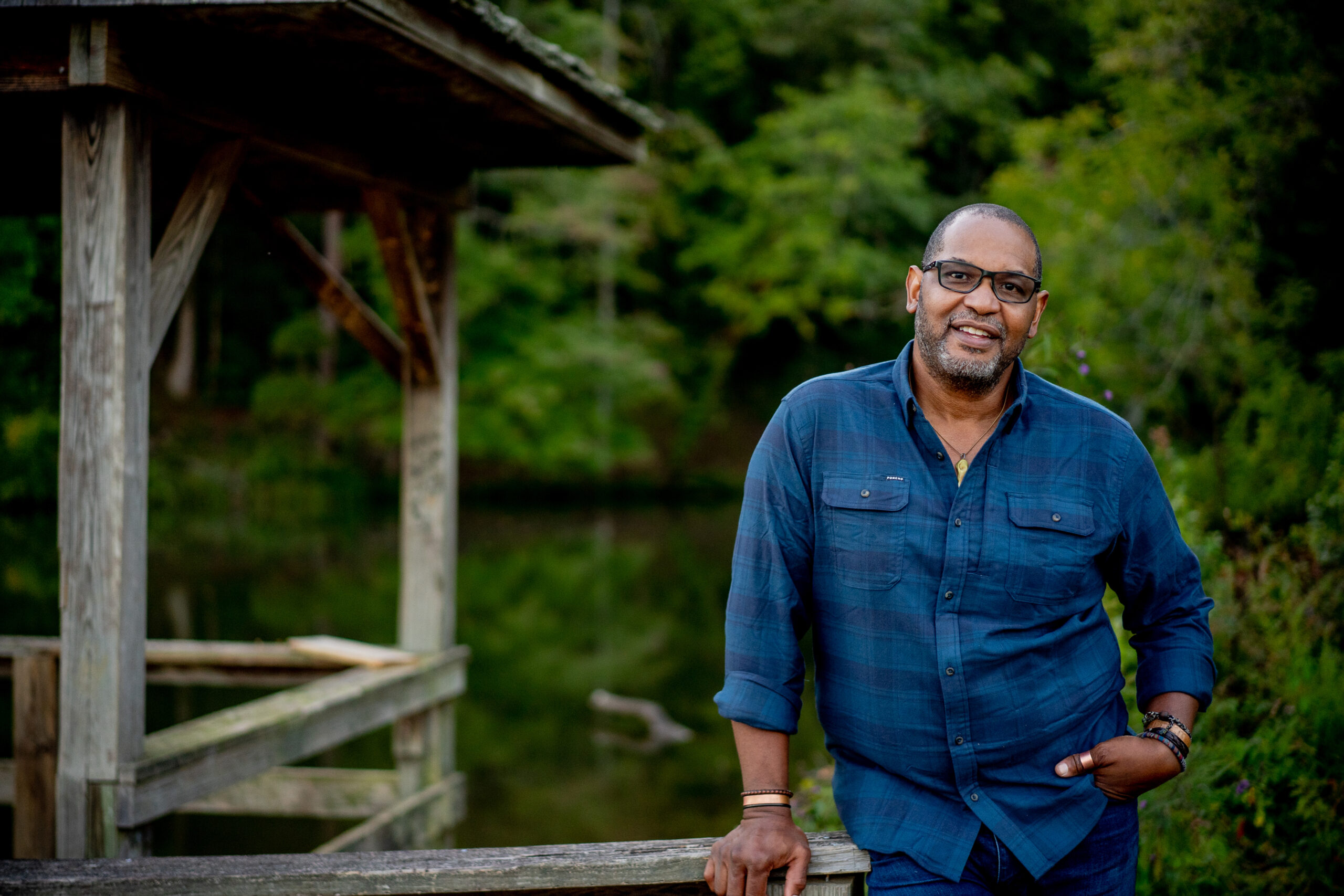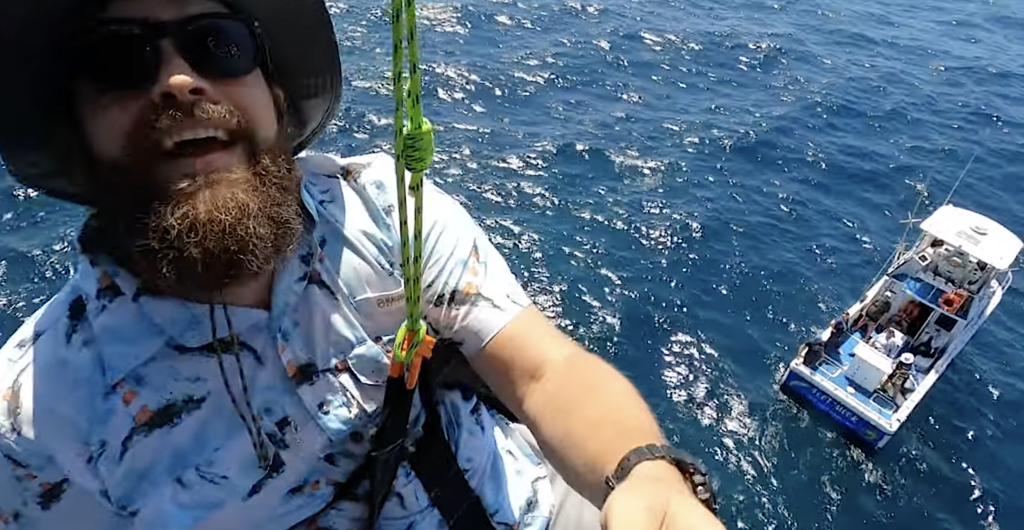
INTRODUCTION BY HANNE PARKS
What better way to give educators more tools to teach about the ocean than to take them 32 miles out into the Graveyard of the Atlantic?
Erika Young, Gail Lemiec, and five North Carolina educators stood on a dock in Wilmington, waiting for a boat that would take them far offshore to begin their much anticipated “returnship.”
A returnship offers long-time educators hands-on professional development with exciting field experiences. Lemiec, Unique Experiences Coordinator at the North Carolina Aquarium at Fort Fisher, and Young, North Carolina Sea Grant’s coastal and marine education specialist, developed a fully funded six-day field-based experience for five educators across North Carolina.
The educators nervously loaded their bags — each under the 25-pound luggage limit — into a small fishing boat. After losing sight of land on the horizon and suddenly feeling the vast expanse of ocean all around them, the group spotted a speck on the horizon: Frying Pan Tower.
Watch the Teachers on the Tower video here.
Young always wanted to visit the iconic Frying Pan Tower — an imposing structure that rises 135 feet above the ocean, 32 miles offshore from Bald Head Island. She knew it would be an incredible space for a marine-based field experience.
“You lose sight of the land and the lighthouse, and you travel for a while, and then suddenly on the horizon you can see it. Then, little by little, it just gets bigger and bigger and bigger,” said Cindy Martin, a science teacher at Montgomery County Early College. “And I could not believe that we were going to be staying there.”
The next adventure presented itself: getting hoisted up to the tower. One by one, the participants strapped into a harness and hooked onto the rope to be hydraulically lifted to the 75-foot-high platform.
“Who are we to put this out here in the middle of the ocean,” thought Adam Smith, a science teacher at South Stanly Middle School, recalling his first impression of Frying Pan Tower.
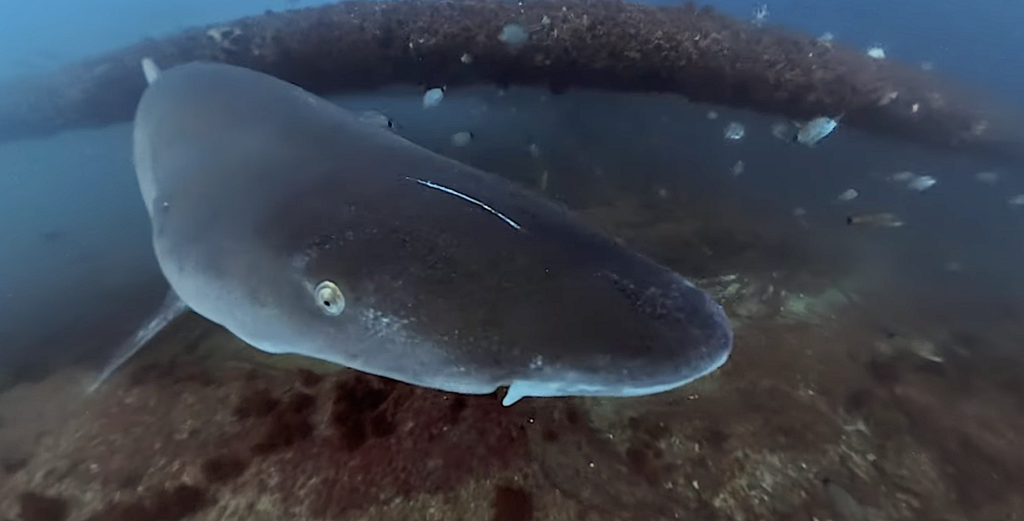
In 1964, the Tower was built in the Frying Pan Shoals by the United States Coast Guard. The shoals are a shifting network of shallow sands that have claimed many ships, earning them the moniker “Graveyard of the Atlantic.” Along with other lighthouses and lightships, Frying Pan Tower served as a beacon of safety for mariners navigating the treacherous graveyard.
The Tower retired in 2004 due to the widespread adoption of GPS technologies. For years, it stood abandoned to rust and slowly crumble into the shoals. In 2010, Richard Neal purchased the tower, determined to give it a new purpose.
Now, the tower serves as an offshore outpost for marine conservation. Around 200 volunteers a year travel to the tower to work on the facility’s physical restoration and preserve its place in history.
Neal dreams of Frying Pan Tower becoming a marine field station for researchers, an ecotourism attraction, and an immersive learning space for educators, while still honoring its history and aiding mariners in the area. Young’s vision excited him.
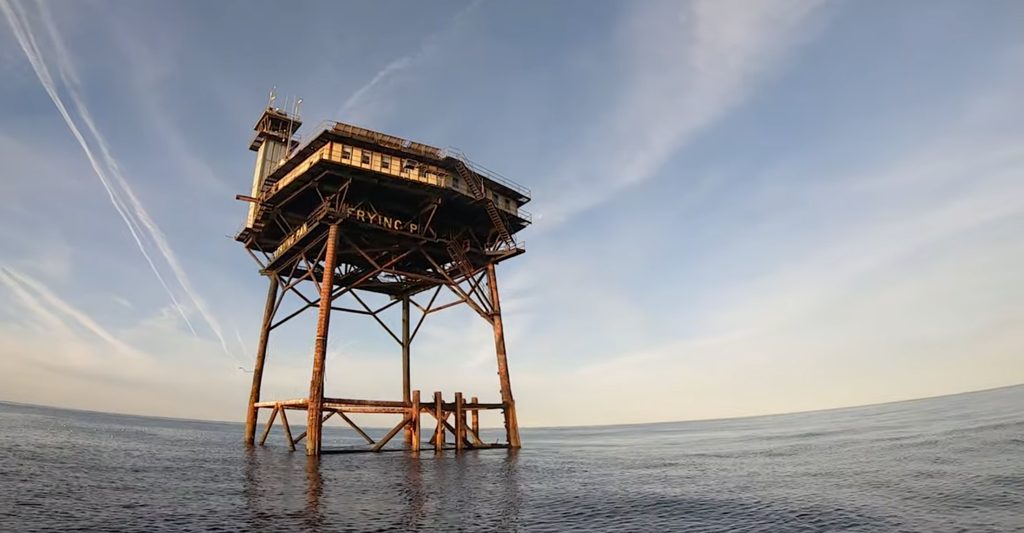
“Our goal at the Frying Pan Tower is to keep people safe and to educate them,” he said, “so we are thrilled to death to take what is basically a fully functioning house in the ocean and use it to learn something new.”
Once Neal greeted the group and everyone safely made landfall on the Tower, the real fun could begin.
A typical day on the tower starts with coffee, chatting, and planning the day’s science experiments. As is the nature of a field-based experience, the weather conditions strongly dictate the schedule. The educators collect the daily water sample, examine marine life under a microscope, snorkel beneath the tower, and spend time enjoying the beauty of the ocean.
Lemiec gave a lecture on the Spot-A-Shark sand tiger shark conservation program, providing the educators with activities, PowerPoints, and community science projects to take back to their classrooms. Educators also planned how they would connect their experiences on the tower to required science curriculums, working together to create engaging activities that would excite their students.
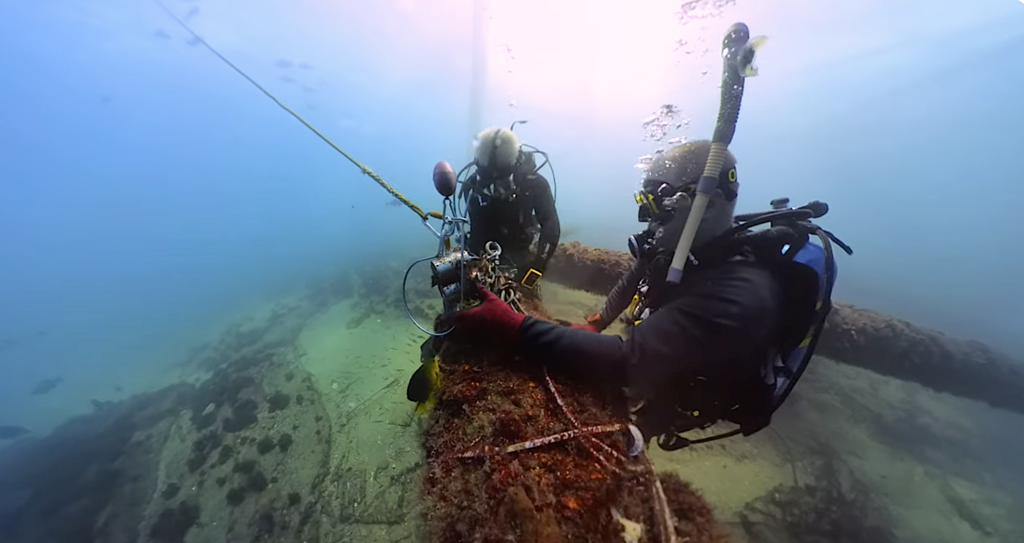
“Having these stories and lessons from the tower helps us connect our river basins and estuaries to the ocean,” said Adam Smith, who previously struggled to find ocean-related content for his classroom. “This is our ocean that we need to take care of, and it’s right there so close to us.”
A key product for students is 360-degree video footage, filmed beneath the tower for the educators to narrate, in which they describe varous fish species and the importance of artificial reefs.
At the end of the day, the group enjoyed incredible oceanic sunsets while cooking dinner together. “The camaraderie that was instantaneous amongst all of them,” said Neal. “It felt like I was going to a family reunion, and it was only because the teachers all loved what they did.”
After six days of adventures, the educators descended the same way they arrived, down onto the boat and back to shore. They took long-lasting memories, friendships, and enthusiasm for the ocean with them.
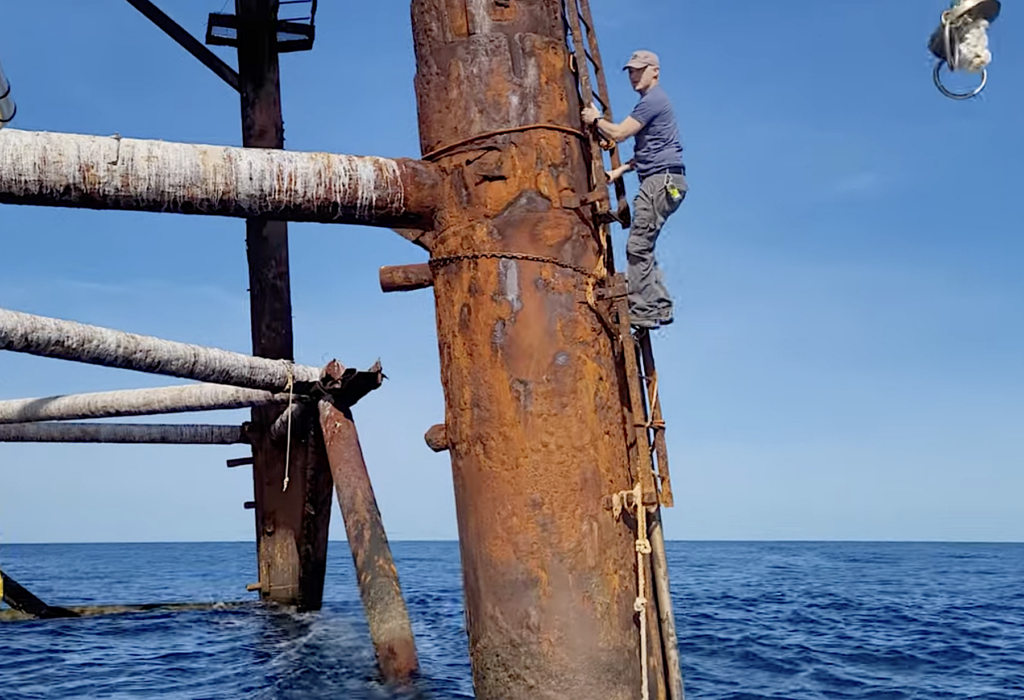
“Now I have a better understanding of the ocean,” said Smith. “I have pictures from my trip, I have stories, and I have resources that I can use to give engaging lessons to my students.”
Becoming an educator involves rigorous study of pedagogical methods, instructional design, and curriculum standards, leaving less time for in-depth exploration of science and art. This is not to say that educators do not want to have these hands-on experiences. In fact, outdoor and field-based experiences have been shown to improve teacher health and wellbeing.
“It felt so real, and not like something that someone was putting on for us. It wasn’t a show,” said Smith. “You have to think of Plan A, B, C, and D — and still, when you go out there, none of those things are going to work. And you are going to have to adapt. I can now teach my students that you have to adapt — even as an adult — even as a scientist.”
When teachers and educators have a deep connection with the curriculum and develop a lesson based on their own experiences, their passion for the topic sticks with their students.
“The experience on the tower really solidified for me that teachers want those hands-on experiences,” said Lemiec, who has led previous field experiences for teachers. “They want to become the scientist or become the researcher. They want to have the experience of being a learner and figuring it out.”
Coastwatch classroom resources for teachers
Dan DiNicola, science and digital media editor for Coastwatch, is an award-winning communicator. Hanne Parks is a contributing editor for Coastwatch and a graduate student in fisheries, wildlife, and conservation biology at NC State University.
- Categories:
